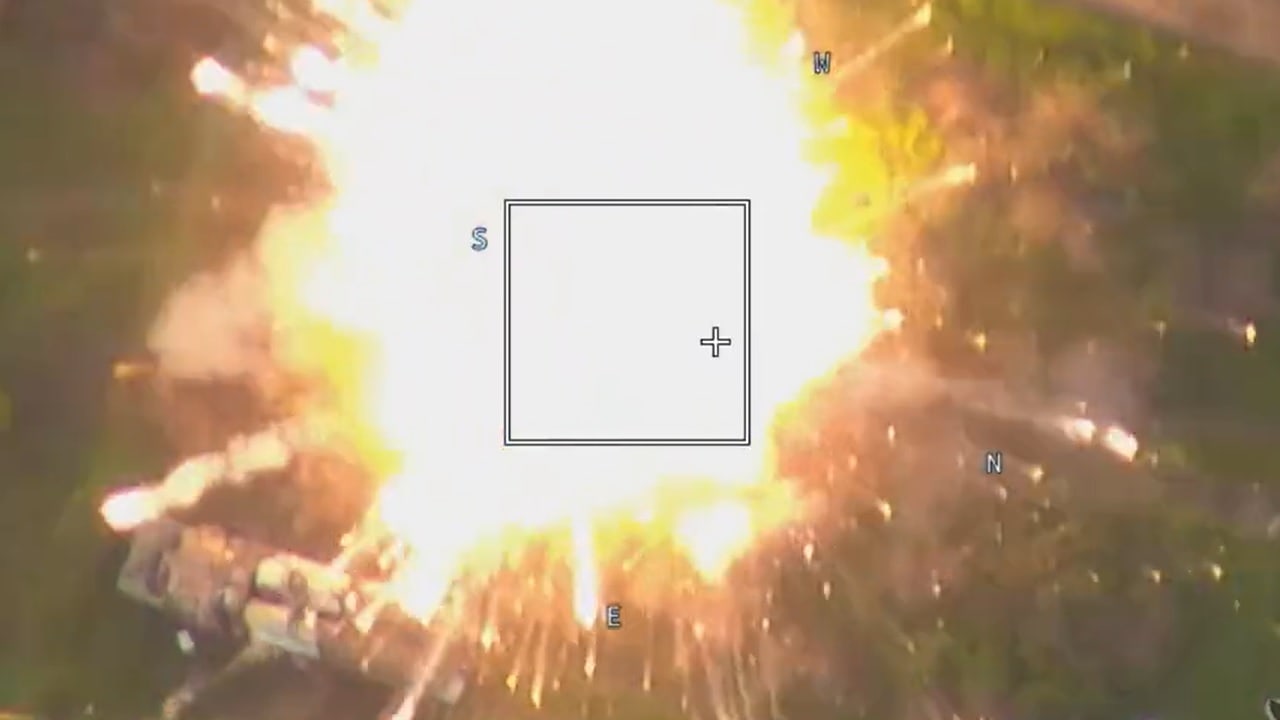Russia Strikes Back With Loitering Munitions – A recent video posted to social media highlights the growing threat of the Russian Lancet loitering munition.
In a clip shared by Ukraine Weapons Tracker (@UAWeapons), a Ukrainian S-300PS air-defense system was seen targeted by the kamikaze drone in the Kherson Oblast.
The authenticity of the video was questioned by some on social media, but also whether the pair of 5P85S launchers seen in the video may have been decoys. Though one is destroyed spectacularly, a second was struck but didn’t detonate. It was suggested that the ordnance didn’t explode since the guidance section wasn’t present.
At issue to some was the range of the respective platforms – the S-300 has a range of 50 miles, whereas the Lancet can operate to distances of just 20 miles.
@GeoConfirmed did note the exact coordinates as being within Ukrainian-controlled territory. Why an S-300 would be positioned close to the frontlines would be unclear.
One possibility is that the air-defense system had been brought to the frontlines as Kyiv’s forces were massing for an attack across the Dnipro River.
The S-300 in the Crosshairs
The S-300 system was initially developed during the Cold War to defend against air raids and cruise missiles for the Soviet Air Defence Forces.
Subsequent variations of the mobile air defense platform were also developed to be able to intercept ballistic missiles.
The S-300 system was first deployed by the Soviet Armed Forces in 1979, designed for the air defense of military bases and large industrial and administrative facilities, as well as control of airspace against enemy strike aircraft.
Following the dissolution of the Soviet Union in 1991, Ukraine inherited a number of the S-300 launchers, but only about six systems were maintained and remained in working condition between 2004 and 2014. However, following Russia’s illegal annexation of Crimea in 2014, and due to the ongoing war in Donbas, Kyiv began to repair older platforms that were in storage.
Prior to the 2022 Russian invasion of Ukraine, the country had approximately 100 batteries. It has since received an additional battery from Slovakia, while Greece had pledged to send two S-300 air-defense systems that Russia had previously supplied to the Republic of Cyprus in 1997.
When the “Missile Crisis” ended in December 1998, the Cypriot government transferred the pair of launches to Greece’s Hellenic Air Force in exchange for alternate weapons; and as part of a U.S.-brokered compromise the S-300 systems were stationed in Crete. Russia had called the transfer a provocative move.
#Ukraine: A Ukrainian 5P85S launcher of the S-300PS air defense system was destroyed by a Russian Lancet loitering munition in #Kherson Oblast.
A 5P85S launcher to the left can also be seen hit on the missile containers which didn’t detonate. pic.twitter.com/pWZ0YDLjFL
— ???????? Ukraine Weapons Tracker (@UAWeapons) April 27, 2023
Earlier this year Ukrainian forces also captured an intact S-300 mobile launcher that had been abandoned by the Kremlin’s troops. That had further bolstered Ukraine’s air defenses, but it appeared from the recent video that Russia has gained the upper hand again.
Russia also operates the S-300 and a number have been modified by Russian forces to perform surface-to-surface strikes. The S-300 has been among the missile systems used to target Ukrainian urban centers and critical infrastructure.
Author Experience and Expertise
A Senior Editor for 19FortyFive, Peter Suciu is a Michigan-based writer. He has contributed to more than four dozen magazines, newspapers, and websites with over 3,200 published pieces over a twenty-year career in journalism. He regularly writes about military hardware, firearms history, cybersecurity, politics, and international affairs. Peter is also a Contributing Writer for Forbes and Clearance Jobs. You can follow him on Twitter: @PeterSuciu.

